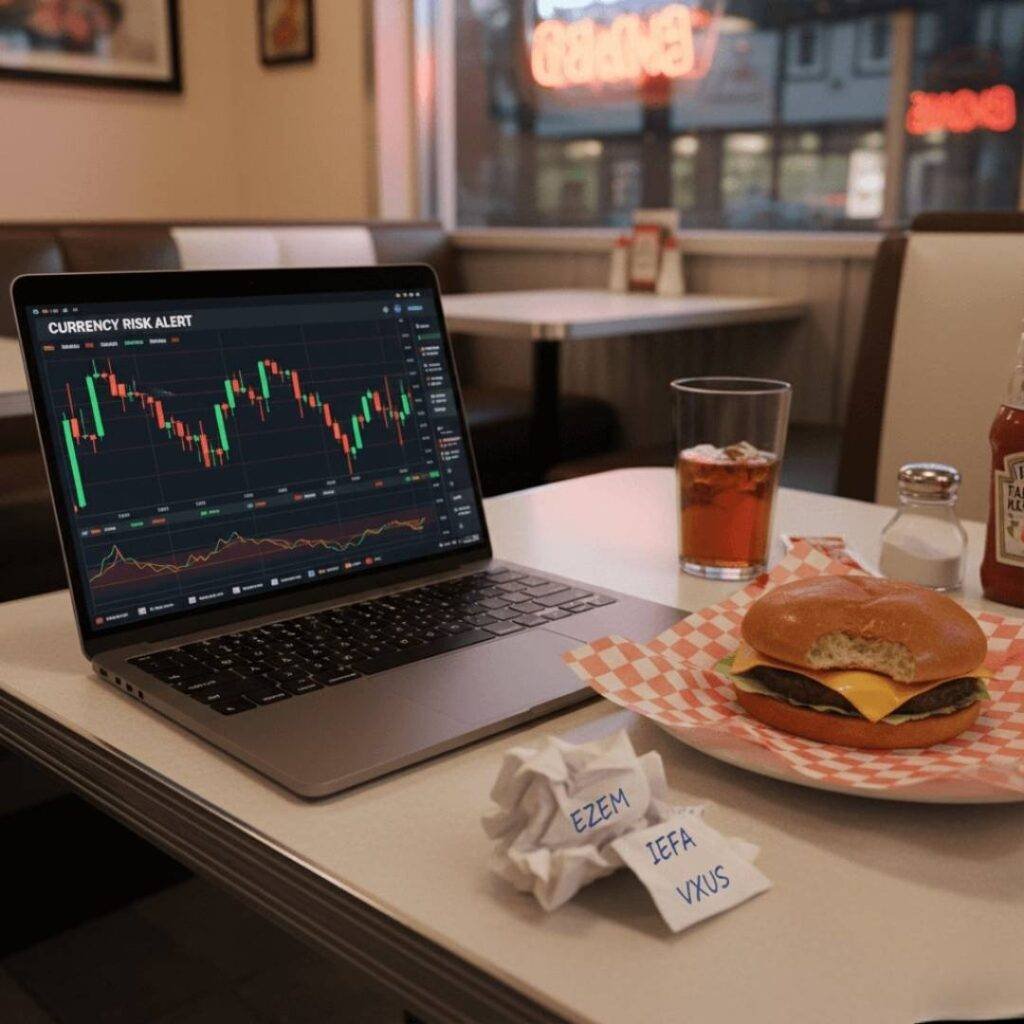International ETFs: Diversify Your Portfolio Globally
I’m sitting here in my cramped apartment in Chicago, staring at a coffee-stained notebook, trying to wrap my head around international ETFs. Like, seriously, these things are a game-changer for diversifying your portfolio globally, but I didn’t always get it. A couple of years ago, I was that guy who thought investing meant dumping all my cash into a single stock because “it felt right.” Spoiler: it wasn’t. My portfolio tanked harder than my attempt to cook Thanksgiving dinner last year (burnt turkey, anyone?). So, let’s talk about how international ETFs saved my financial butt and why you should care.
Why I Fell for International ETFs
Okay, so picture this: I’m scrolling through my phone at 2 a.m., surrounded by empty takeout containers, panicking about my investments. I’d put everything into US tech stocks, and then the market decided to throw a tantrum. I was sweating bullets, y’all. That’s when I stumbled across a blog post about international ETFs—exchange-traded funds that let you invest in global markets without needing a PhD in finance. It was like finding a cheat code for diversifying my portfolio globally. According to Investopedia, ETFs are baskets of securities you can trade like stocks, and international ones? They give you exposure to companies across the world—think Europe, Asia, emerging markets, all that jazz.
The first time I bought an international ETF, I felt like a kid sneaking cookies—nervous but excited. I picked one focused on emerging markets, and let me tell you, the thrill of owning a slice of companies in Brazil and India from my couch in the US? Wild. But I also messed up. I didn’t check the expense ratio and ended up with a fund that was pricier than my Netflix subscription. Lesson learned: always check the fees.

How International ETFs Work (and Why They’re Not Scary)
So, here’s the deal with international ETFs—they’re like a buffet of global stocks, bonds, or other assets, all wrapped up in one neat package. You buy a share, and boom, you’ve got exposure to global markets without needing to pick individual stocks in, like, Japan or Germany. I used to think investing overseas was for fancy Wall Street types, but nah, it’s for regular folks like me who just want to diversify their portfolio globally without losing their mind.
Here’s what I love about them:
- Diversification, duh: If the US market crashes (again), your international ETF might still be chilling because other countries are doing their thing.
- Low cost (usually): Most ETFs have lower fees than mutual funds. Check out Vanguard’s international ETFs for some solid options.
- Flexibility: You can trade them all day, unlike mutual funds that only settle at market close. Perfect for my impulsive self.
But, real talk, I got cocky once and bought an ETF without checking its holdings. Turns out, it was heavy on one country that tanked due to political drama. My portfolio looked sadder than my attempt at growing a beard last Movember. So, always peek under the hood—check what countries or sectors your ETF is betting on.
My Biggest Screw-Ups with Global ETFs
I’m not gonna pretend I’m some investing guru. I’ve made mistakes with international ETFs that still make me cringe. Like that time I bought a global ETF right before a major currency fluctuation because I didn’t understand exchange rates. I was sitting in a diner, sipping terrible coffee, watching my portfolio dip while the waitress gave me side-eye for hogging the booth. I learned the hard way that currency risk is a thing—when the US dollar strengthens, your international ETF might take a hit. Morningstar has a great breakdown on this if you want to nerd out.
Another dumb move? I ignored regional ETFs for way too long. I was all about “global” funds, but then I realized you can get specific—like ETFs focused on Asia-Pacific or Latin America. I tried one focused on European markets, and it felt like I was betting on fancy cheese and fast cars. It’s not always a win, but it’s fun to mix it up.

Tips for Diving into International ETFs (From Someone Who’s Tripped a Lot)
If you’re thinking about international ETFs, here’s my advice, straight from my messy journey:
- Start small: Don’t dump your life savings into one ETF. I did that once and spent a week eating ramen. Not fun.
- Check the expense ratio: Anything over 0.5% is steep unless it’s super specialized. Compare fees on sites like ETF.com.
- Mix it up: Get a blend of developed markets (like Europe) and emerging markets (like India). It’s like balancing pizza and salad—both are good in moderation.
- Watch the news: Global markets are wild. Political stuff, trade wars, all that can mess with your ETFs. I learned this when I ignored Brexit news and, well, ouch.
Also, don’t be like me and panic-sell when things dip. I sold an ETF during a market wobble last year, only to watch it rebound while I sulked in my pajamas. Patience is key, y’all.
Wrapping Up This Global ETF Rant
So, yeah, international ETFs are my jam now. They’ve helped me diversify my portfolio globally, and I’m not as freaked out when the US market gets moody. Sitting here in my chilly Chicago apartment, with the radiator clanking and my cat judging me, I’m grateful I took the plunge. It’s not perfect—I still check my portfolio too often and stress-eat chips when markets dip—but it’s better than my old “all eggs in one basket” days.
If you’re curious, start small, do your homework, and maybe don’t check your investments at 3 a.m. like I do. Got questions or your own ETF horror stories? Drop ‘em in the comments—I’m all ears.





